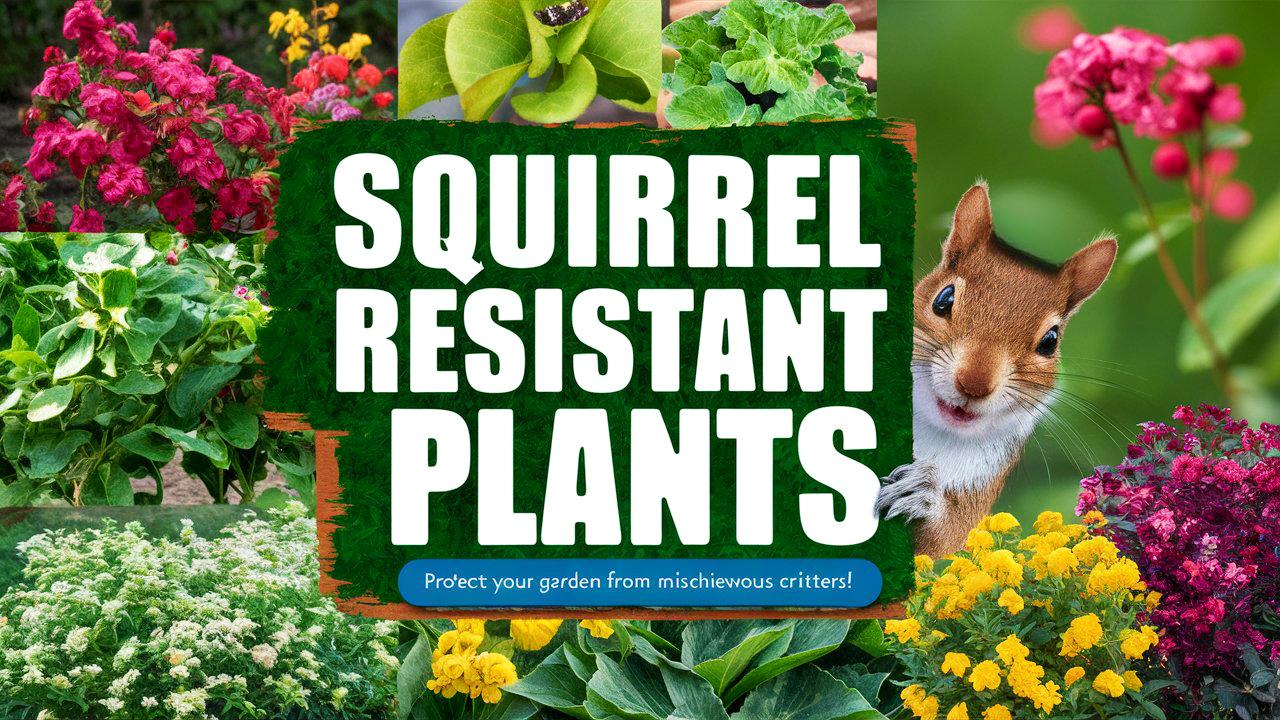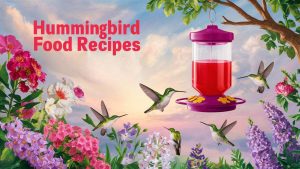Squirrels can be charming to watch as they dart around our outdoor spaces, but their foraging can pose a serious threat to our gardens. As they rummage through our carefully planted flowers and vegetables, it’s essential for gardeners to discover which plants can act as a natural deterrent. Some plants are naturally unappealing to squirrels due to their taste, scent, or texture.
Below, we will explore various plants known for their resistance to squirrel predation, providing insight into their characteristics, cultivation, and the benefits they can offer your garden.
Alliums
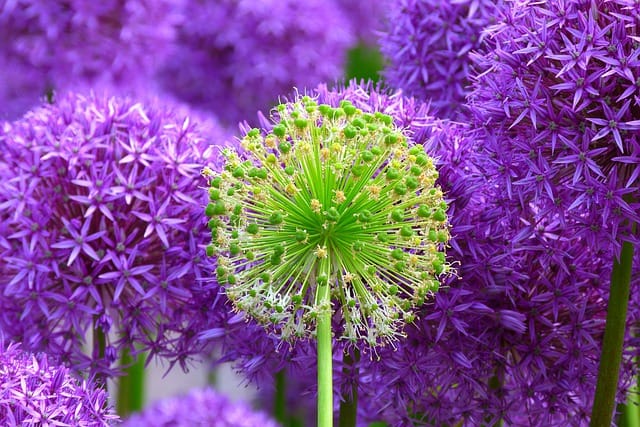
Alliums, a genus that includes onions, garlic, and leeks, are not only beneficial for human consumption but also serve as effective squirrel deterrents. Squirrels are known to dislike the strong smell that alliums emit, which is particularly potent when the leaves or bulbs are disturbed. Planting varieties such as Allium giganteum or Allium moly can add beautiful purple or golden blooms to your garden while discouraging squirrel activity.
Beyond their repellent properties, alliums are also highly attractive to pollinators such as bees and butterflies, making them an excellent addition to pollinator gardens. They thrive in well-drained soil and prefer full sun, which allows for their vibrant blooms to flourish. Left in the ground, these hardy bulbs can multiply and return each year, creating an increasingly vibrant display while keeping pesky squirrels at bay.
Marigolds
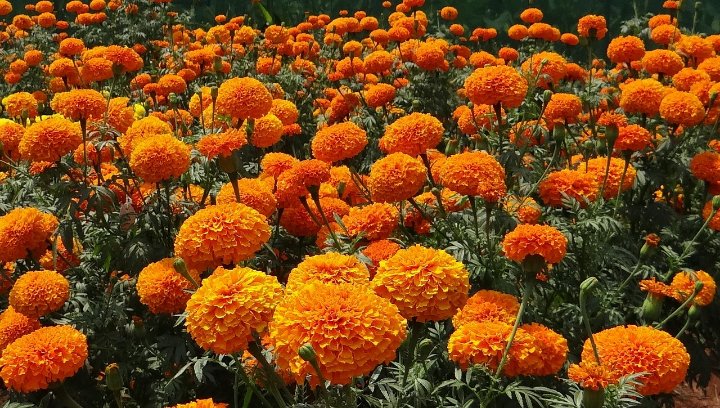
Marigolds are a gardener’s best friend, known for their bright colors and ability to repel a variety of pests. Their strong aroma, which many humans find pleasant, is a major deterrent to squirrels, rabbits, and even some insects. Calendula and French marigolds are especially popular choices due to their resilience and vibrant flowers.
These annuals thrive in a variety of soil types, provided it is well-draining, and they require full sun to partial shade. Marigolds not only enhance the beauty of your garden but also serve to attract beneficial insects like ladybugs, which can help control aphid populations. Teaming marigolds with other plants creates a colorful barrier that squirrels may be hesitant to cross, thus preserving your more delicate plants from their erratic digging.
Daffodils
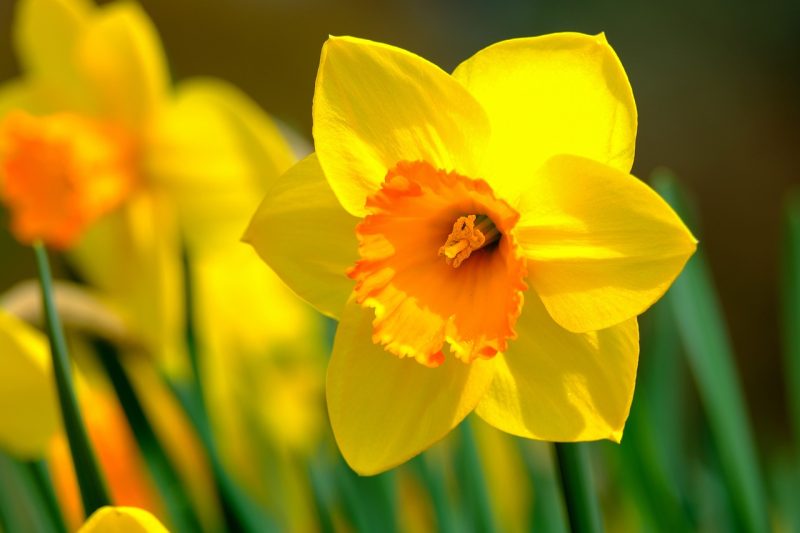
Daffodils are another excellent option for creating a squirrel-resistant garden. The bulbs contain a compound called lycorine, which is toxic to many animals, including squirrels. Not only does this toxicity make them unappealing as a food source, but it also deters squirrels from digging them up.
These perennial favorites bloom in early spring, showcasing a burst of yellow and white blooms that herald the arrival of warmer weather. Daffodils are incredibly easy to grow, requiring minimal care aside from planting the bulbs in well-drained soil in a sunny spot. Once established, daffodils will naturalize and return year after year, providing reliable beauty without the worry of squirrel interference.
Lavender
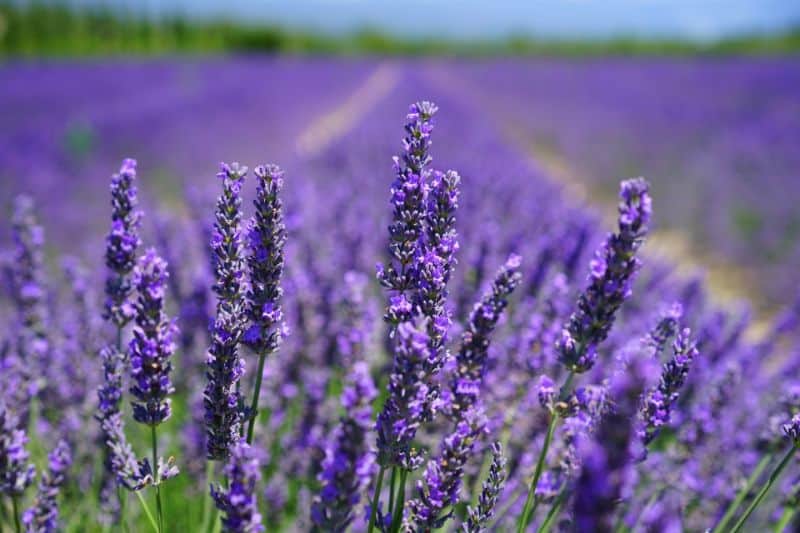
Lavender, with its fragrant purple spikes, is not only beloved for its soothing scent but also acts as a natural deterrent to squirrels and other pests. The strong aroma of lavender is pleasing to humans but can be overwhelming to rodents, making it an excellent candidate for resisting squirrel invasions.
In addition to its repellent qualities, lavender is drought-resistant and thrives in poor soils, requiring full sun to flourish. Its versatility makes it suitable for herb gardens, borders, or even as a hedging plant. Beyond its practical uses, lavender attracts pollinators and beneficial insects, enhancing the biodiversity of your garden. Harvesting the flowers for culinary uses or homemade sachets further extends the use of this attractive plant.
Peppermint
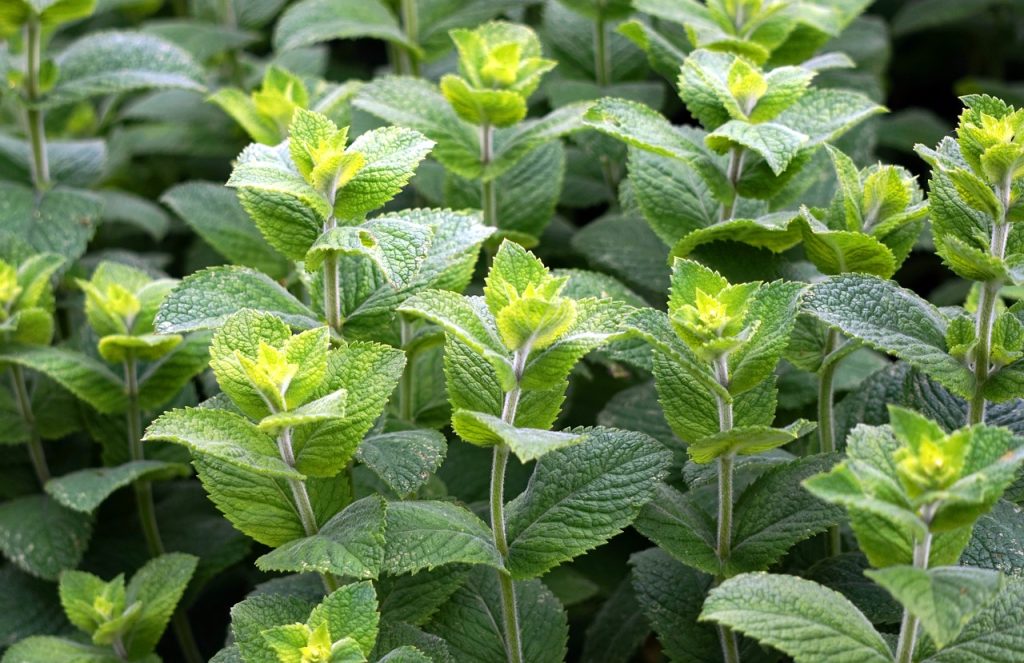
Peppermint is recognized for its strong scent, which can be quite off-putting to squirrels. Besides its effectiveness at deterring these critters, peppermint is a versatile herb that can be utilized in the kitchen for teas, garnishes, and flavoring.
Planting peppermint can be achieved easily, as it grows well in a variety of settings, including pots or garden beds. Just be cautious; peppermint is invasive, so it’s advisable to confine it to containers or designated garden areas. This hardy perennial performs best in partial shade to full sun, thriving in moist, well-drained soil while providing a fragrant and delightful garden experience.
Ferns
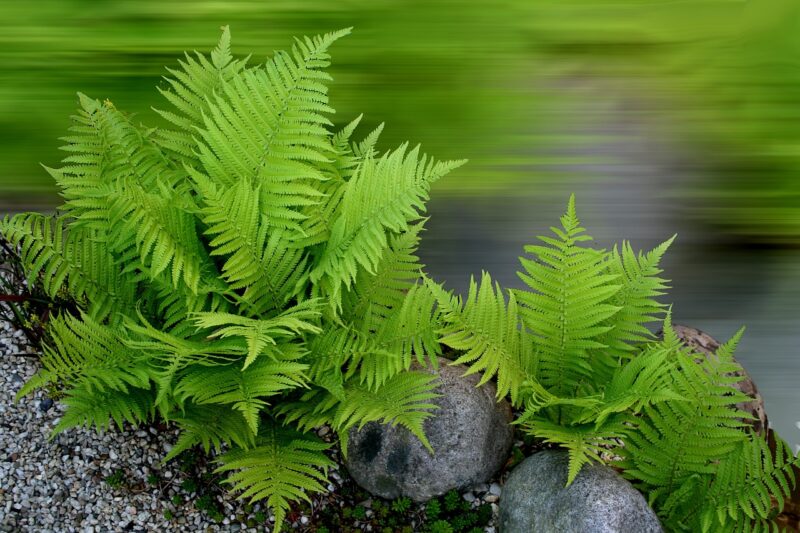
Ferns present an attractive option for homeowners looking to deter squirrels. With their feathery, textured leaves, various fern species can create lush, tropical-like settings that squirrels prefer to avoid. The toughness of fern fronds can deter squirrels from digging and disturbing your other plantings.
Many fern species flourish in shaded environments, making them perfect for under trees or in dim corners of gardens. Ferns require consistently moist soil and should be planted with adequate spacing to allow for their broad spread. Incorporating ferns not only enhances the beauty of the landscape but also provides a natural barrier that squirrels generally avoid due to the complexity of their foliage.
Castor Beans
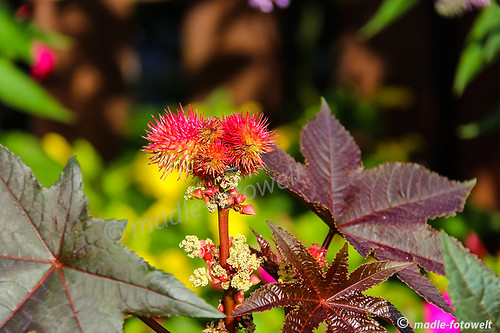
Castor beans, while toxic to many animals and humans alike, can serve as a potent deterrent against squirrels. The leaves of the Ricinus communis plant are not only aesthetically appealing with their vibrant star-shaped foliage but also carry a natural toxicity that makes them unpalatable to most wildlife.
Castor beans are fast-growing annuals, thriving in full sun and requiring well-drained soil to reach their full height and visual impact. While they can exceed six feet in height, creating a striking backdrop in gardens, caution should be taken when planting these seeds, as they can pose a hazard to pets and children. However, their effectiveness in protecting delicate plants from squirrel predation often outweighs the concerns associated with their toxicity when properly managed.
Nasturtiums
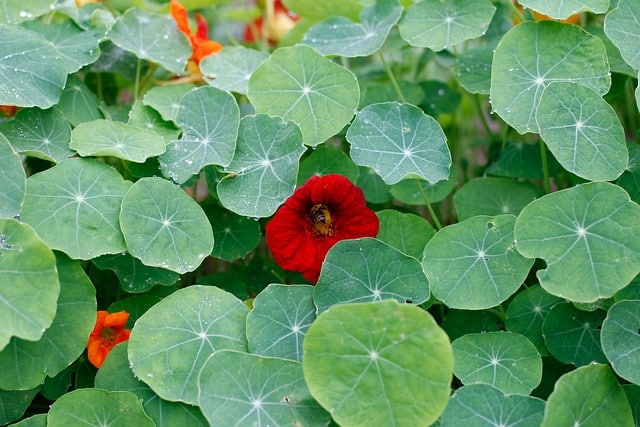
Nasturtiums are a charming addition to gardens, boasting vivid flowers and the ability to deter a variety of pests, including squirrels. The leaves and flowers are edible and have a peppery flavor, making them a delightful addition to salads. However, squirrels are often put off by their strong flavor, which can serve as a natural deterrent in your garden.
These cheerful annuals thrive in poor soil conditions and are incredibly easy to grow from seed. They prefer full sun or partial shade and can spread abundantly, often serving as ground cover. Their vibrant blooms attract butterflies and pollinators, enhancing the garden’s ecosystem productivity. Additionally, nasturtiums can be used as a trap crop to attract pests away from more precious plants.
Thyme

Thyme offers a fragrant and useful herb that doubles as a squirrel deterrent. Its strong aroma, especially when brushed against, tends to repel not just squirrels but also deer. This culinary herb is valuable for cooking, making it a notable dual-purpose plant.
Planting thyme is hassle-free, as it thrives in well-drained soil and requires about six hours of sunlight daily. Thyme is a drought-tolerant plant once established, making it a low-maintenance addition to any garden. The sprawling nature of certain thyme varieties can create a wonderful ground cover while the thyme blooms attract pollinators and other beneficial insects, adding layers of complexity to your garden’s health.
Tansy
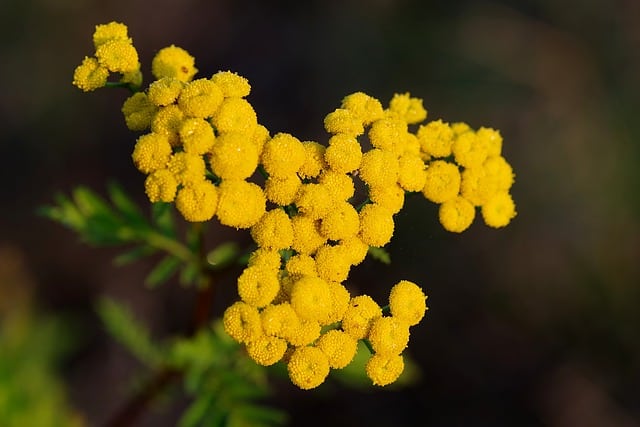
Tansy is a perennial herb with an intriguing history as a medicinal plant, historically used for various ailments. Its strong, pungent aroma is aversive to many pests, including squirrels. Tansy produces bright yellow button-like flowers that can add visual interest to your landscape.
This hardy plant thrives in well-drained soils and tolerates a range of conditions, from partial shade to full sun. While it can become invasive if not controlled, a carefully managed planting can ensure that the benefits of tansy outweigh any potential drawbacks. It also attracts beneficial insects like hoverflies and predatory wasps, creating a healthier ecosystem in your garden.
Rue
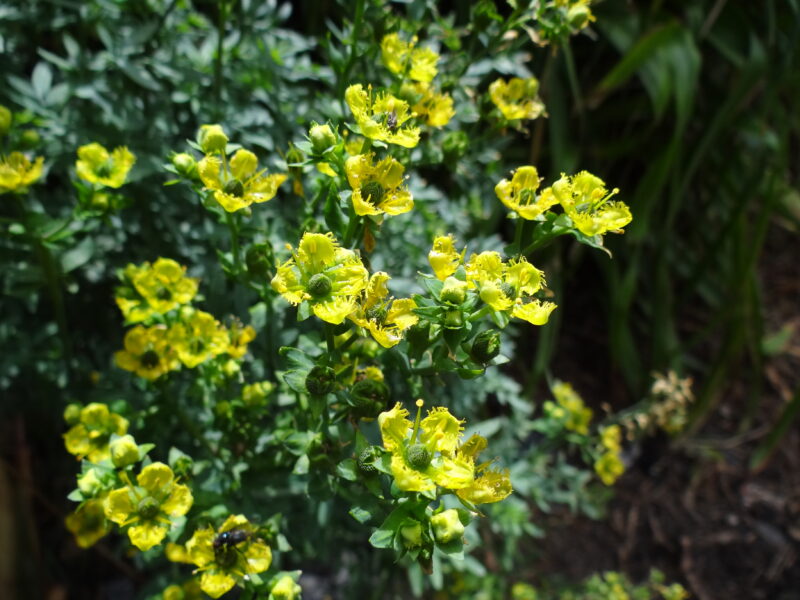
Rue (Ruta graveolens) is often referred to as the “herb of grace” due to its historical medicinal properties. The plant’s strong scent is unpleasant to many animals, including squirrels, making it an effective deterrent. Rue features distinctive blue-green leaves and produces small yellow flowers, providing a unique visual element in gardens.
Rue thrives best in well-drained soil and requires full sun for optimal growth. It’s important to note that rue can be toxic if ingested, so caution should be exercised if children or pets are around. This hardy perennial is often drought-resistant and can be a productive addition to herb gardens while providing a protective barrier against invasive garden critters.
Euphorbia
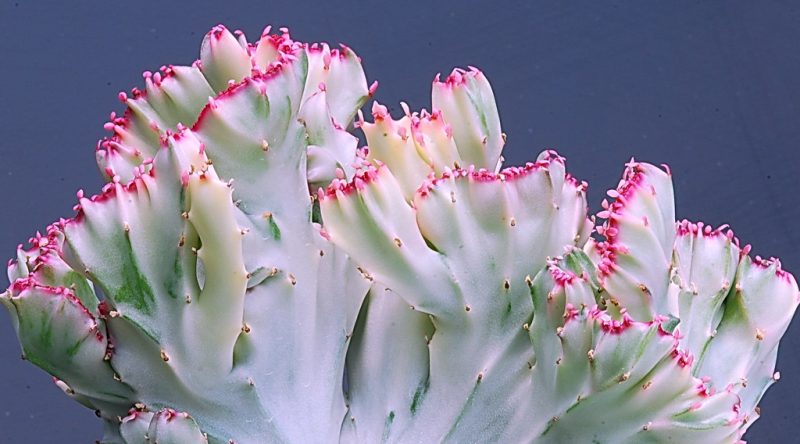
Euphorbia, commonly known as spurge, is a diverse genus of plants that can range from small annuals to large perennials. Its milky sap contains a compound that can irritate skin and deter animals, including squirrels, from eating or disturbing the plants. Various species, such as Euphorbia characias and Euphorbia ‘Blackbird,’ can bring unique textures and colors to your garden.
These drought-tolerant plants are typically easy to care for, thriving in poor soils with plenty of sun. Their distinctive foliage and unusual flower structures can add depth and interest to any garden landscape. Additionally, euphorbias attract pollinators, bolstering the overall ecosystem health while keeping unwanted squirrels at bay.
Chrysanthemums

Chrysanthemums, often simply known as mums, are a favorite in fall gardens for their vibrant bursting colors and ability to deter squirrels. The strong scent and taste of chrysanthemum foliage are unappealing to many animals, ensuring these beauties remain mostly untouched by nibbling critters.
These perennials thrive in full sun and prefer well-draining, fertile soil, making them a great choice for flower beds and borders alike. They are also adaptable to a variety of garden styles, from formal to cottage gardens. In addition to their visual appeal, chrysanthemums bloom at a crucial time of year, contributing to the late-season nectar supply for pollinators while providing a natural barrier against more mischievous garden inhabitants.
Pine Trees
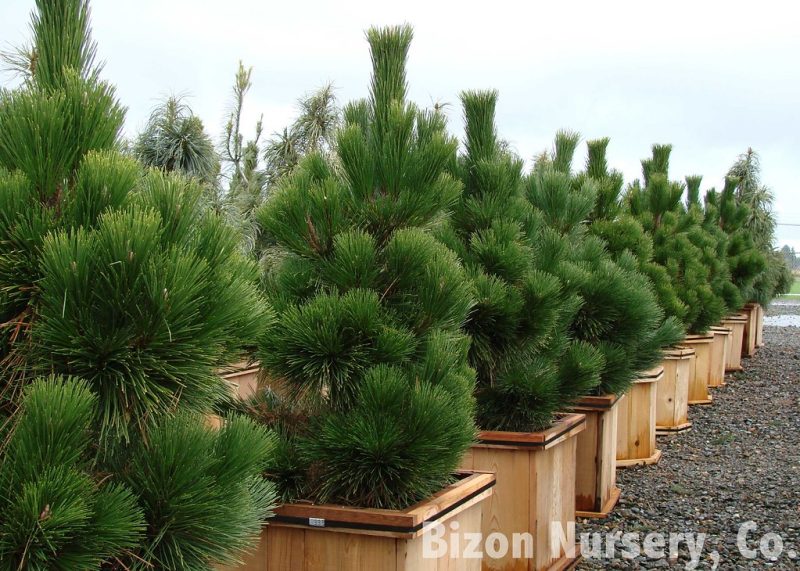
Lastly, pine trees constitute a robust and long-lasting solution for squirrel deterrence. Squirrels may be attracted to some plants and gardens, but they tend to avoid areas dominated by these coniferous giants. The needle-like foliage and strong scent of pine are generally unappealing to them, making larger gardens or landscapes with pines less susceptible to their foraging.
Apart from their role in deterring squirrels, pine trees provide numerous ecological benefits; they offer shelter and nesting sites for various bird species. Pine trees are also drought-resistant once established and require minimal maintenance. By creating a more resilient landscape through strategic planting, you can cultivate an environment that respects both nature and your garden treasures.
Daffodils

Daffodils (Narcissus) are a quintessential spring flower that brings vibrant yellow and white hues to gardens. One of the best attributes of daffodils is their toxicity to many animals, including squirrels. The bulbs contain a compound called lycorine, which is unpleasant and even harmful if ingested, making these bulbs largely untouched.
Daffodils are extremely easy to grow, thriving in well-drained soil and requiring only a few hours of sunlight each day. They bloom early in the spring, heralding the new season and providing early nectar for pollinators. Besides deterring squirrels, their resistance to pests like deer and rabbits makes them a robust choice for gardeners seeking low-maintenance plants. Once planted, daffodils multiply over the years, creating a joyous display with minimal effort.
Fritillaries
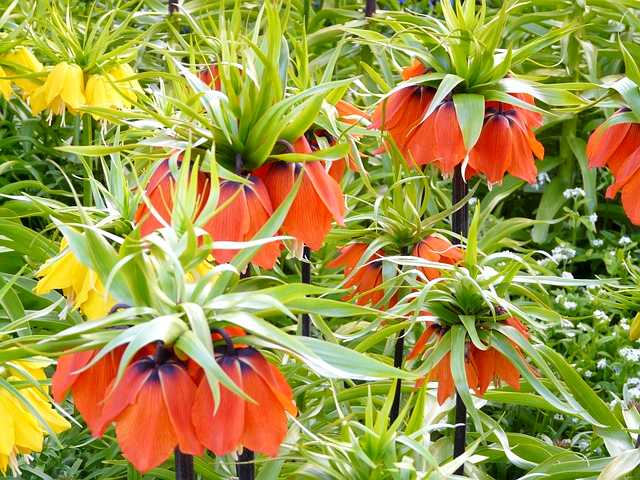
Fritillaries are often overlooked gems in the garden. The most common species, Fritillaria meleagris, is distinguished by its checkered pattern on the petals, lending an air of elegance to any landscape. Much like daffodils, fritillaries are toxic, which helps maintain their integrity against hungry critters.
These perennial bulbs prefer well-drained soil and a sunny to partially shaded location. Fritillaries flourish in gardens that mimic their natural habitats, often found in meadows or grassy areas. Planting them in clusters can create a striking visual impact during the spring bloom. Their unique appearance and resilience to squirrels make fritillaries a great addition to mixed flower beds or naturalistic gardens.
Galanthus
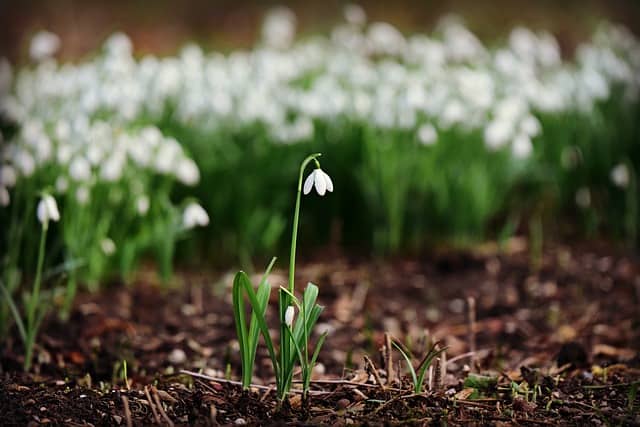
Galanthus, commonly known as snowdrops, are among the first flowers to bloom in late winter to early spring, often poking through the snow with their delicate white blooms. Squirrels generally avoid these bulbs due to their toxicity, which makes them another excellent choice for keeping these pests at bay.
These bulbs thrive in well-drained soil and should be planted in partial shade or a sunny spot with rich, moist earth. They reproduce quickly and create beautiful carpets of white flowers that can spread naturally over time. Snowdrops not only fight off squirrels but also offer early-season nectar sources for bees, making them valuable for encouraging pollinator populations in your garden.
Geraniums
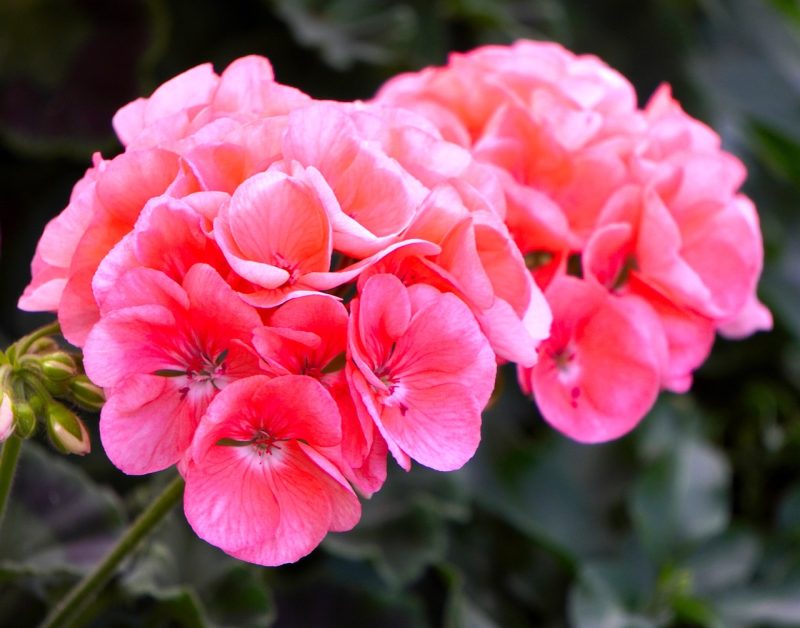
Geraniums, an encompassing term often used to refer to both true geraniums and pelargoniums, are delightful additions to any garden, celebrated for their vibrant or pastel-colored blooms. Their scent is known to repel a variety of common garden pests, including squirrels, making them a dual-purpose plant that offers both aesthetic pleasure and pest deterrence.
Geraniums thrive in full sun to partial shade and prefer well-drained soil. They require moderate watering, and deadheading can encourage longer blooms throughout the summer. Additionally, geraniums are highly versatile and can be used in containers, garden beds, or as ground cover. Their effectiveness in deterring pests, coupled with their vibrant colors and long blooming period, makes them a favored choice among gardeners.
Hyacinths
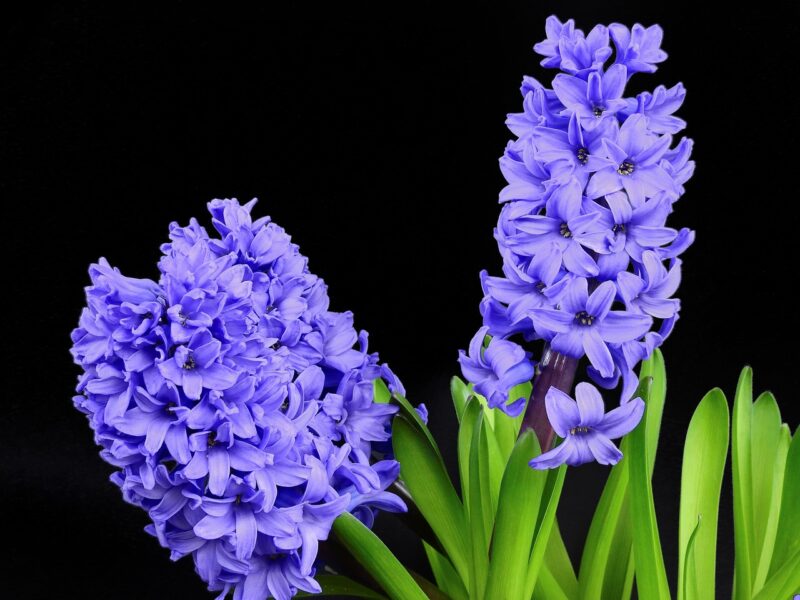
Hyacinths are yet another bulbous plant that can deter squirrels due to their strong fragrance, which is often off-putting to many animals. These plants produce clusters of richly colored blooms that add vibrancy and fragrance to gardens in early spring.
Hyacinths prefer well-drained soil and full sunlight, although they can tolerate some shade. They perform best in tightly packed groups, creating a stunning focal point in borders or garden beds. The potent fragrance of hyacinths not only attracts pollinators but also forms a natural barrier against pests, including squirrels, while offering a remarkable addition to your spring garden.
Lily of the Valley
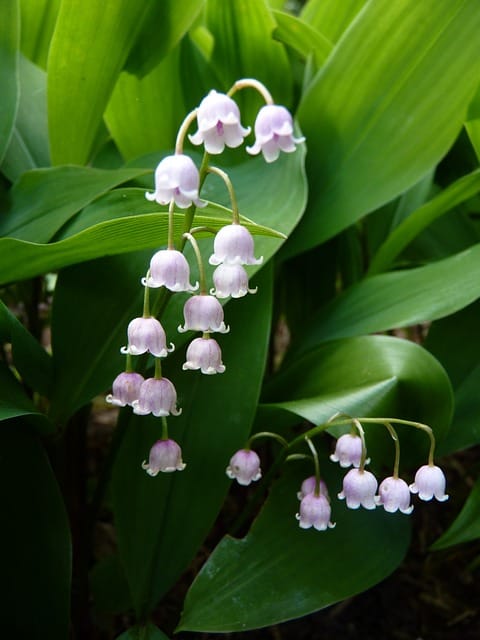
Convallaria majalis, commonly known as lily of the valley, is a perennial flowering plant known for its delicate, bell-shaped white flowers and sweet scent. The plant is highly toxic if ingested, which effectively keeps squirrels and other pests at bay.
Lily of the valley prefers shady areas with rich, moist, well-drained soil. Once established, it spreads rapidly, creating lush ground cover that is also effective at suppressing weeds. The fragrance from these blossoms can be enchanting, and their resilience makes them a favored choice for woodland gardens, where they can thrive without much competition.
Narcissus
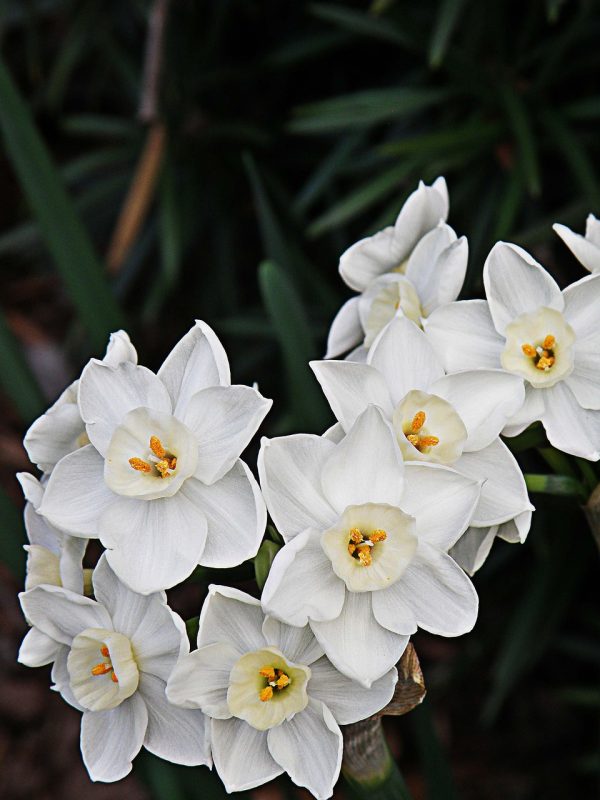
Narcissus is often regarded as synonymous with daffodils but encompasses a broader range of flowering bulbs, including jonquils and paperwhite varieties. Much like their daffodil counterparts, narcissus bulbs contain toxic elements that repel both squirrels and other pests.
Narcissus blooms come in various colors and sizes, ensuring a varied and vibrant display in gardens. They thrive in well-drained soil and require full sun to flourish. With their ability to multiply and naturalize, narcissus bulbs can provide repeated enjoyment in established gardens. Their toxicity ensures squirrel resistance while allowing gardeners to appreciate the beauty of spring blooms without worry.
Crown Imperial
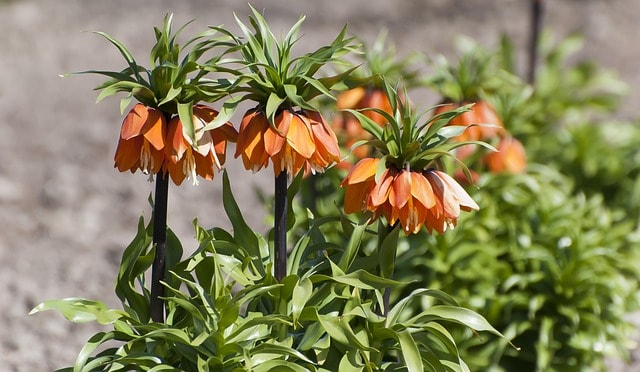
Crown Imperial (Fritillaria imperialis) is an eye-catching plant often recognized for its distinctive, crown-like cluster of flowers atop a tall stem. Like many other bulbous plants, crowned imperial is unpalatable to pests, including squirrels, due to its toxic compounds.
These striking plants thrive in well-drained soil, preferably in full sun or partial shade. Crown imperials are ideal for creating dramatic garden focal points, and their unusual shape and vibrant colors are sure to add flair to your garden design. Offering toxin resistance is just one of the many reasons these striking flowers deserve a place in any shabby chic or contemporary garden.
Mint
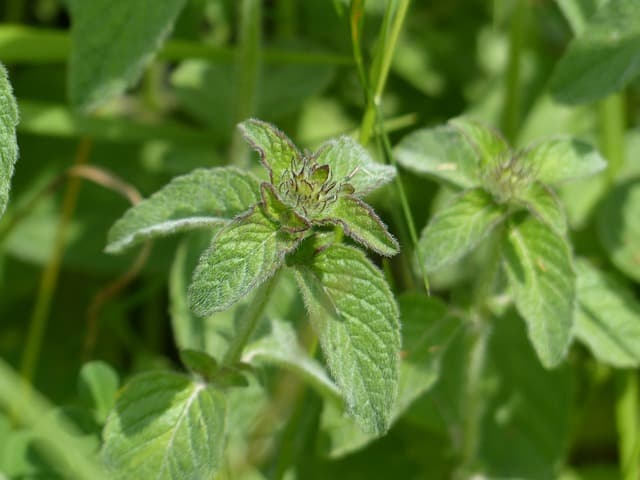
Mint is a robust herb known for its strong aromatic properties that not only enhance culinary dishes but also serve to repel various pests, squirrels included. The intense fragrance emitted from mint leaves can create an environment that squirrels tend to avoid.
Mint grows vigorously, preferring moist, well-drained soil and full sunlight, although it can adapt to shadier spots. Given its invasive nature, it’s best to plant mint in containers to control its spread. Not only is mint a beautiful ground cover, but it also attracts beneficial pollinators such as bees and butterflies, creating a thriving ecosystem in your backyard.
Salvia
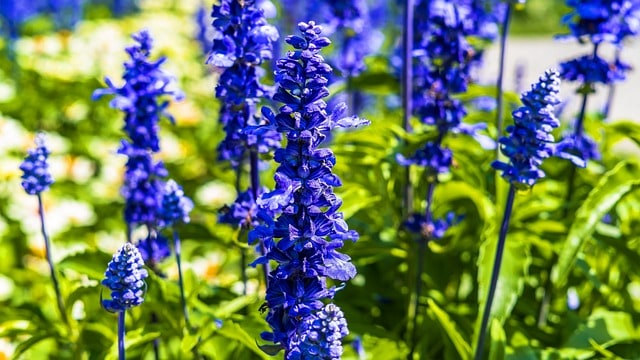
Salvia, commonly known as sage, is a diverse genus that includes thousands of species, many known for their ornamental beauty and usage in culinary applications. The pungent scent of salvia can act as a deterrent for various pests, including squirrels.
Different salvia species prefer various growing conditions, but most thrive in well-drained soil and require full sun. Planting salvia in borders or as a focal point in the garden encourages pollinators and beneficial insects while warding off unwanted foragers. The colorful spikes of salvia flowers create an inviting landscape while acting as an effective barrier against pest invasions.
Rosemary

Rosemary (Rosmarinus officinalis) is a popular culinary herb, valued not only for its aromatic leaves but also for its ability to deter animals. Squirrels are often less inclined to disturb areas with strong-scented herbs, and rosemary is no exception.
This perennial herb enjoys full sun and well-drained soil, making it an excellent choice for Mediterranean-themed gardens or herb spirals. Rosemary is drought-resistant once established, and its fragrant leaves can add culinary delight while providing a visual and aromatic barrier against visiting squirrels and rodents.
Lavender

Lavender is recognized for its beautiful purple flowers and soothing scent. This popular herb is often employed in gardens as a deterrent for pests, particularly squirrels. The strong fragrance can repel them while simultaneously attracting beneficial pollinators, making lavender a prime choice for garden design.
Lavender thrives in well-drained, sandy to loamy soils in locations with full sun exposure. Once established, this drought-tolerant plant requires minimal maintenance. With its stunning blooms and aromatic foliage, lavender enhances garden aesthetics, adding an air of tranquility while serving a functional role in repelling critters.
Oregano
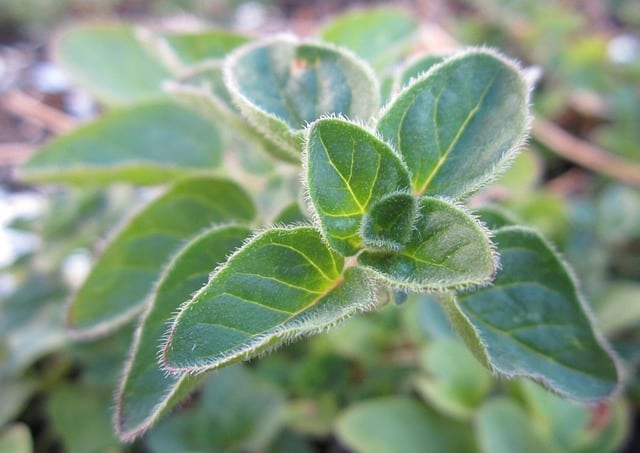
Oregano is an aromatic herb essential in many culinary dishes, but it also does double-duty as a squirrel deterrent. Squirrels are often discouraged from lingering in areas where the strong scent of oregano pervades the air.
This hardy perennial prefers well-drained soil, thriving in sunny locations. Once planted, oregano spreads quickly, making it appropriate for herb gardens or as a border plant. Not only does oregano enhance your culinary creations with its flavor, but it also serves to create a fragrant barrier against squirrel disturbances.
Basil
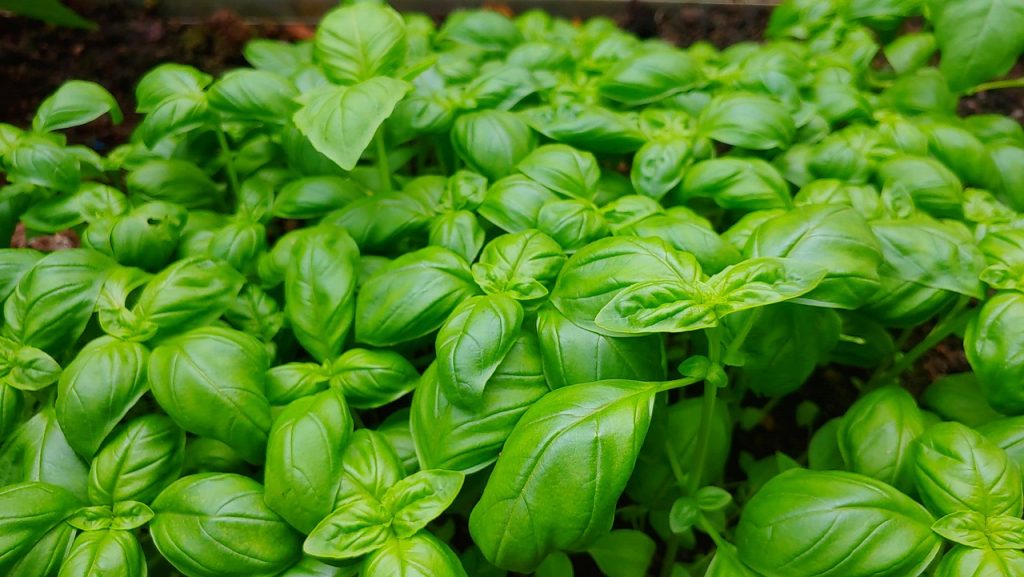
Basil (Ocimum basilicum) is beloved for its culinary benefits, known for its key role in Italian and Mediterranean cuisines. The strong scent of basil can deter squirrels, keeping your garden’s bounty safe from their foraging instincts.
Basil grows well in rich, well-drained soil and requires full sun, making it an ideal candidate for both garden beds and containers. Regular pruning encourages bushier growth and more abundant leaves. In addition to safeguarding itself from pests, basil attracts beneficial insects like bees and butterflies. Its versatility can enhance your culinary dishes while protecting other garden plants.
Sage
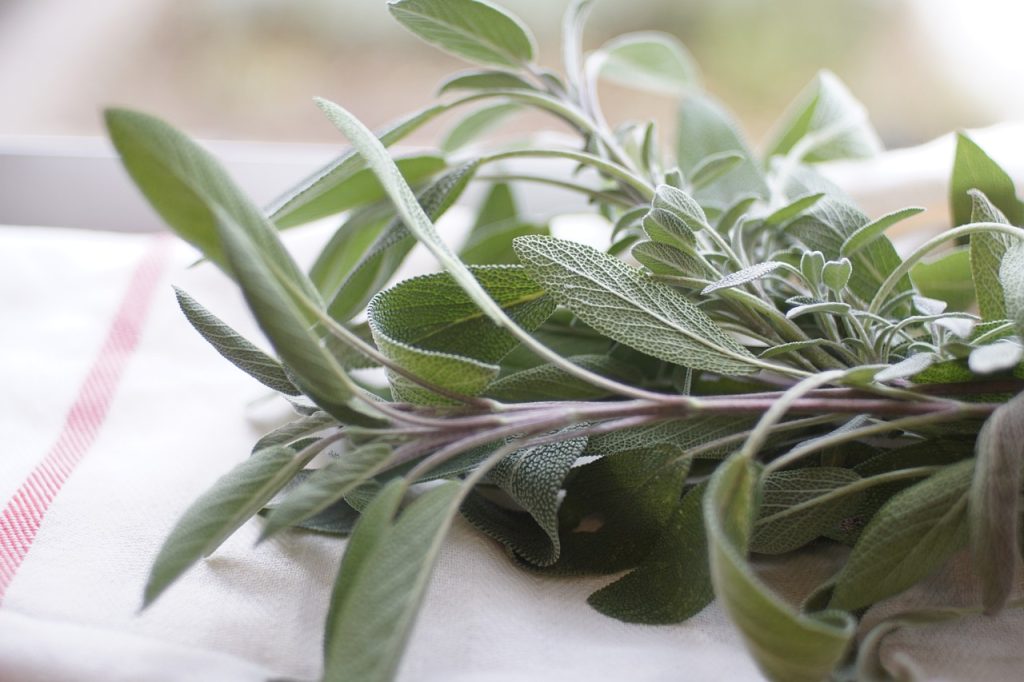
Sage (Salvia officinalis) is a hardy perennial herb known for its culinary and medicinal uses. Its strong odor repels various pests, including squirrels, making it a smart selection for herb and vegetable gardens.
Sage thrives in full sun and well-drained soil, preferring dry conditions once established. This easy-going herb can tolerate poor soil and is often used in border gardens due to its attractive silvery foliage. As an added benefit, sage blooms attract pollinators, enriching your garden and ensuring a balanced ecosystem while protecting your plants.
Chives
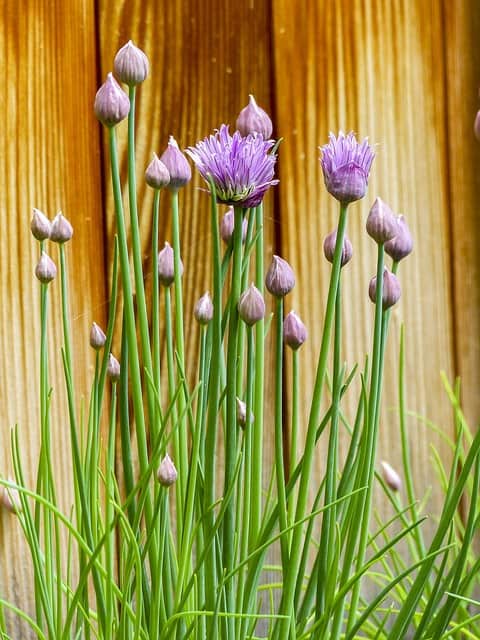
Chives (Allium schoenoprasum) are not only flavorful culinary herbs but also effective in deterring pests. The strong scent and flavor of chives can dissuade squirrels from digging up your prized plants.
These perennial herbs flourish in well-drained soil and require full sun to partial shade. They produce lovely purple flowers in the spring that are also edible, adding visual interest to your garden. Chives are easy to grow and multiply rapidly, ensuring an abundance of this versatile herb for culinary use. With their pest-repelling properties and beautiful blooms, chives add a functional and ornamental element to any garden.
Garlic
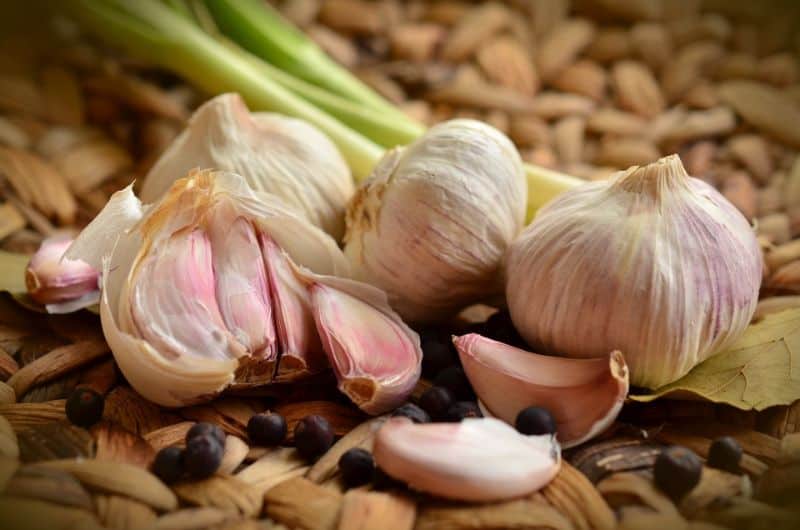
Garlic (Allium sativum) is well-regarded not just for its culinary advantages but also for its pest-repelling capabilities. The strong odor of garlic, particularly when planted in large groups, can effectively deter squirrels and other wildlife from approaching your precious plants.
Garlic is relatively easy to grow, thriving in well-drained soil with full sun. Planting garlic cloves in the fall allows them to establish roots before the winter months, leading to robust bulb formation in late spring. Aside from their pest-repellent qualities, garlic bulbs can enrich many dishes with flavor, showcasing the dual-purpose potential of this remarkable plant.


